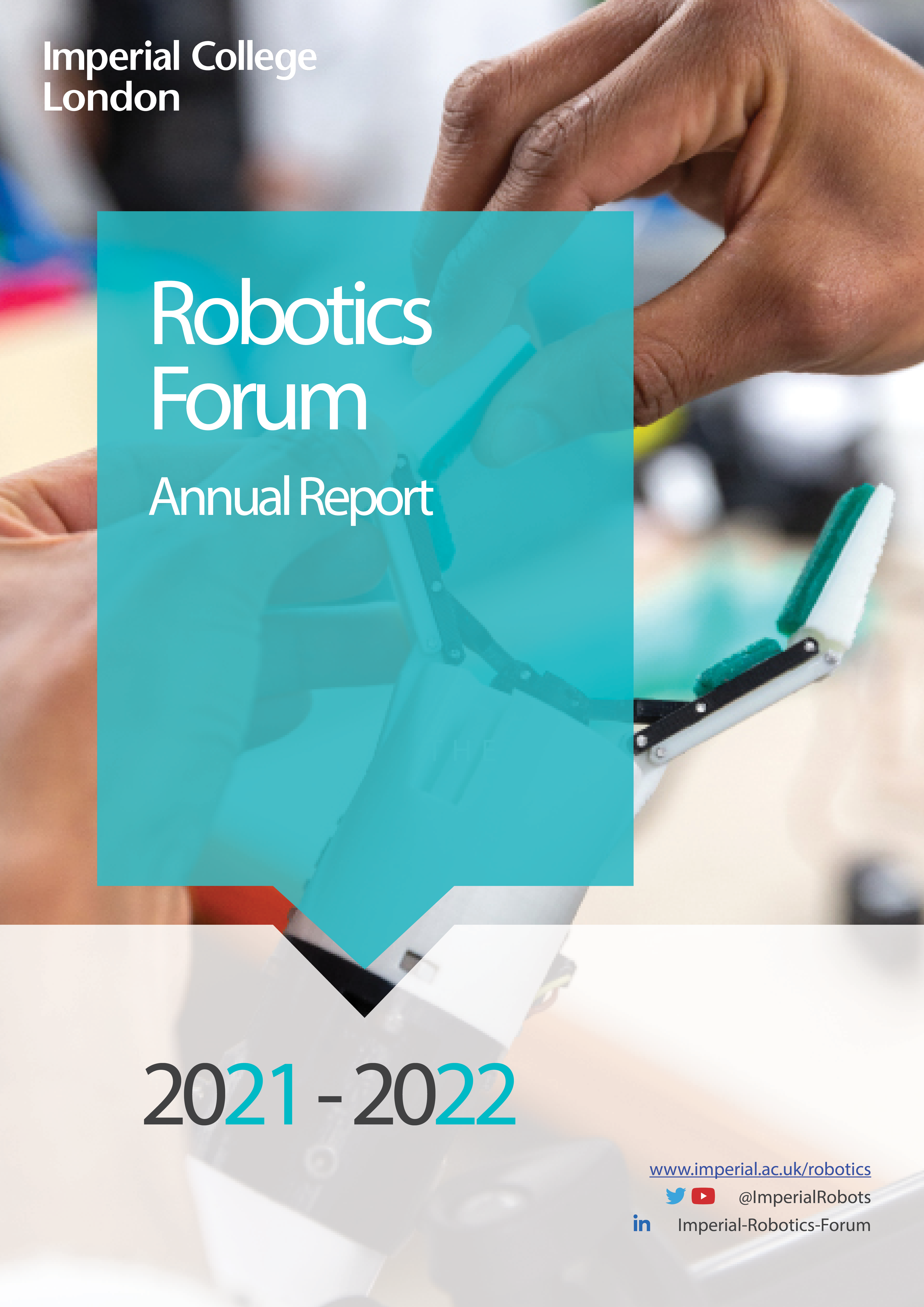Below is a list of all relevant publications authored by Robotics Forum members.
Results
- Showing results for:
- Reset all filters
Search results
-
Conference paperCarrera A, Palomeras N, Hurtos N, et al., 2015,
Learning multiple strategies to perform a valve turning with underwater currents using an I-AUV
-
Conference paperAhmadzadeh SR, Paikan A, Mastrogiovanni F, et al., 2015,
Learning Symbolic Representations of Actions from Human Demonstrations
-
Conference paperJamali N, Kormushev P, Carrera A, et al., 2015,
Underwater Robot-Object Contact Perception using Machine Learning on Force/Torque Sensor Feedback
-
Conference paperKormushev P, Demiris Y, Caldwell DG, 2015,
Encoderless Position Control of a Two-Link Robot Manipulator
-
Conference paperJamisola RS, Kormushev P, Caldwell DG, et al., 2015,
Modular Relative Jacobian for Dual-Arms and the Wrench Transformation Matrix
-
Conference paperLane DM, Maurelli F, Kormushev P, et al., 2015,
PANDORA - Persistent Autonomy through Learning, Adaptation, Observation and Replanning
-
Journal articleTakano W, Asfour T, Kormushev P, 2015,
Special Issue on Humanoid Robotics
, Advanced Robotics, Vol: 29 -
Journal articleBimbo J, Kormushev P, Althoefer K, et al., 2015,
Global Estimation of an Object’s Pose Using Tactile Sensing
, Advanced Robotics, Vol: 29 -
Conference paperAhmadzadeh SR, Kormushev P, Caldwell DG, 2014,
Multi-Objective Reinforcement Learning for AUV Thruster Failure Recovery
-
Conference paperAhmadzadeh SR, Jamisola RS, Kormushev P, et al., 2014,
Learning Reactive Robot Behavior for Autonomous Valve Turning
-
Conference paperDallali H, Kormushev P, Tsagarakis N, et al., 2014,
Can Active Impedance Protect Robots from Landing Impact?
-
Conference paperJamisola RS, Kormushev P, Bicchi A, et al., 2014,
Haptic Exploration of Unknown Surfaces with Discontinuities
-
Conference paperAhmadzadeh SR, Carrera A, Leonetti M, et al., 2014,
Online Discovery of AUV Control Policies to Overcome Thruster Failures
-
Conference paperJamali N, Kormushev P, Caldwell DG, 2014,
Robot-Object Contact Perception using Symbolic Temporal Pattern Learning
-
Conference paperCarrera A, Karras G, Bechlioulis C, et al., 2014,
Improving a Learning by Demonstration framework for Intervention AUVs by means of an UVMS controller
-
Conference paperJamali N, Kormushev P, Ahmadzadeh SR, et al., 2014,
Covariance Analysis as a Measure of Policy Robustness in Reinforcement Learning
-
Conference paperCarrera A, Palomeras N, Ribas D, et al., 2014,
An Intervention-AUV learns how to perform an underwater valve turning
-
Conference paperCarrera A, Palomeras N, Hurtos N, et al., 2014,
Learning by demonstration applied to underwater intervention
-
Conference paperAhmadzadeh SR, Kormushev P, Caldwell DG, 2013,
Autonomous robotic valve turning: A hierarchical learning approach
, 2013 IEEE International Conference on Robotics and Automation (ICRA), Publisher: IEEE, Pages: 4629-4634, ISSN: 1050-4729Autonomous valve turning is an extremely challenging task for an Autonomous Underwater Vehicle (AUV). To resolve this challenge, this paper proposes a set of different computational techniques integrated in a three-layer hierarchical scheme. Each layer realizes specific subtasks to improve the persistent autonomy of the system. In the first layer, the robot acquires the motor skills of approaching and grasping the valve by kinesthetic teaching. A Reactive Fuzzy Decision Maker (RFDM) is devised in the second layer which reacts to the relative movement between the valve and the AUV, and alters the robot's movement accordingly. Apprenticeship learning method, implemented in the third layer, performs tuning of the RFDM based on expert knowledge. Although the long-term goal is to perform the valve turning task on a real AUV, as a first step the proposed approach is tested in a laboratory environment. © 2013 IEEE.
-
Conference paperKarras GC, Bechlioulis CP, Leonetti M, et al., 2013,
On-Line Identification of Autonomous Underwater Vehicles through Global Derivative-Free Optimization
This data is extracted from the Web of Science and reproduced under a licence from Thomson Reuters. You may not copy or re-distribute this data in whole or in part without the written consent of the Science business of Thomson Reuters.
Join our mailing list - sharing robotics-related activities at Imperial.
Contact Us
Robotics Forum
For all enquiries, please contact our Forum Manager, Dr Ana Cruz Ruiz
robotics-manager@imperial.ac.uk
